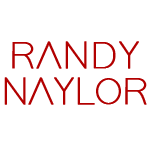2 SUSTAIN-ABILITY
I will attempt in this paper to introduce a sustainable approach toward a new social ontology. To do this I will introduce the concepts of Self-Organization/Distribution and Assemblages in relation ship to the Micro/Macro reductionism theory.
Self-Organization models have emerged from the historical epochs and paradigm shifts; the Agrarian to the Industrial (Ford assembly line), Post Industrial, to Information , to the present Service and Concept society. I regard these past epochs as linear models that represent hierarchal chain and decision making process that has led to our current ecological crisis, energy crisis and the conspicuous consumption consumer society.
The Self-Organization model represents a new paradigm shift. Self-Organization is the appropriate concept where we entertain new Assemblages of cross-fertilization, complexity, heterogeneity and multiplicity. Self-Organization shows itself in participation by many stakeholders. True participation has all parties determine the agenda, its process and realization. (ant colonies, highway traffic, market economies, immune systems_ in all of these systems, patterns are not determined by some centralized (linear) authority but by local interactions among decentralized components). These Self-Organized systems are a study of non-linear dynamics and research in biological fields of ecology and chaos theory.
Traditional Micro/Macro theory has always concerned with the parts and whole relationship. I will argue that all intelligence exists in the micro, that the micro space is a decentralized space and that the macro space in contemporary society is totally centralized by huge conglomerates and corporations where the decision making is hierarchal and represents the parts are equal to the whole theory. I consider community space and networks (meshworks) micro organisms. What distinguishes
between micro/ macro theory is new Assemblage theory. Assemblage theory does not separate the parts from the whole, rather assemblages attract unlike things,” A component part of an assemblage may be detached from it and plugged into a unlike assemblage in which the interactions are different.”( DeLanda) In every day occurrence we have
dj electronic assemblages, linked computer assemblages, cross cultural assemblages all promoting a heterogeneous process. In the modernist homogeneous model the parts are equal to the whole, form follows function and the ends justify the means.
Self-Organization and Distribution create new assemblages and conscious participatory models. The advent of U Tube, My Space and FaceBook are contemporary models of global assemblages based on the self-org and distribution model. Unlike hierarchal organizations, these electronic community spaces are open ended, it is not time bound and you can change the rules while playing and allows for the development of multiple identities. Recent studies in traffic control have found that the round-about placed every 1000 meters down the road greatly reduces traffic accidents and the driver assumes a self- organized/distribution mode when entering these spaces. The most advanced army in the world faces defeat when confronting an “insurgent” self-organized
“enemy” that works in cross-over assemblages and distribution meshworks more modeled after a bee hive and ant colony than a linear army where a general calls the shots. A current project in Stavanger in which I participate, Job Resept places (distributes) psychiatric patients in professional studios for recovery rather than keeping them locked in the ward which is in the process of decentralization. These studios are interdependent intelligent nodes that create community assemblages and public health intervention.
The heuristic model of 2 Sustainability promotes “social assemblages containing mechanisms which in addition to casual interaction, involve reason and motive” and with this awareness of reason and motive an ecological model based on the idea that the earth is a limited resource that old models exploited populations, resources and intelligence to create their end game. 2 SustainAbility is a paradigm shift from linear models to heterogeneous process to sustain a Public Health and Art of living that is not based on “burning down the house”, rather creating sustainable models of living that involve both synthetic and organic process, self-organization where one is not taking invisible orders, rather creating the conditions where one can think and organize and act sustainable.
